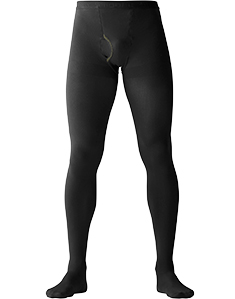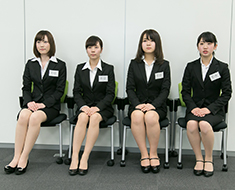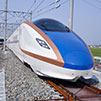New products for new markets
 Manufacturers and retailers must find new ways to do business in the wake of economic and demographic changes across the country, according to Shukan Diamond (22 February).
Manufacturers and retailers must find new ways to do business in the wake of economic and demographic changes across the country, according to Shukan Diamond (22 February).
One such change is a decline in average annual incomes, which, in 2012 fell ¥590,000—equivalent to roughly one month’s salary—from a peak of ¥4.67mn in 1997.
Another is a drop in the number of “standard families”, in which parents and children live under one roof. Compared with 1980, when 42.1% of all households fit this category, the figure dropped to 27.9% in 2012, and is projected to decline further to 23.3% by 2035.
Major shifts such as these are forcing firms to innovate.
In 2010, hosiery manufacturer Naigai Co., Ltd. threw caution to the wind and introduced tights for men. The firm’s inspiration was an email it received from a man who said the cold weather had led him to try wearing his wife’s tights under his business suit.
Yuta Koyama, who devoted eight years to developing the product, said that various problems had to be overcome to launch the item. These included the need to design an aperture in the front of the tights to facilitate use of urinals.
Koyama persuaded Nagai to produce a test lot of just 1,000 pairs in 2008. By the winter of 2012, sales were up to 15,000 pairs, and the following winter the total hit 20,000 pairs, at ¥1,575 each.
Clearly, a willingness to think outside the box paid off.
Another trend shows people in their twenties are imbibing considerably less alcohol than they did a decade ago.
According to the Ministry of Health, Labour and Welfare, the percentage of men describing themselves as regular drinkers plummeted from 35% in 2003 to 15.7% in 2011.
Among women, the corresponding figures were 14.3% and 8.3%, respectively. Along with quasi-beer (beerlike beverages that have little or no malt content and, therefore, are taxed less than real beer) and non-alcoholic beverages, the search continues for innovative drink products.
Global Tastes
Shukan Diamond also reported that the number of legal foreign residents in Japan has roughly tripled over the past three decades, a rise of 300,000 in Tokyo alone.
While the number of Japanese residents in four of Tokyo’s wards—Arakawa, Kita, Shibuya and Shinjuku—have declined, the foreign population has increased.
These foreign residents tend to be young and earn comparatively low incomes, but they represent a new market for goods and services that should not be overlooked.
Information Overload
A 2012 survey conducted by Nomura Research Institute also found that 70% of Japanese consumers felt troubled or confused by information overload, rendering product-purchasing decisions more difficult.
“Before the internet, businesses controlled most of the data”, said management consultant Hiroyuki Nitto. “While one might assume that consumers would become more savvy by obtaining information from the internet, that’s not the case. Since there’s an excess of information, it’s become necessary for consumers to integrate the data they obtain”.
In some areas, such as fashion and cosmetics, consumers are more inclined to follow the opinions of “experts”. In other categories, such as food, alcoholic drinks, TVs, appliances and home computers, they tend to make personal selections, which are factors that firms must consider in their marketing.
Poor posture hurts job hunt
A mensetsukan is an interviewer, usually an employee present during the initial stage of job screening. Nikkan Gendai (11 March) reports that candidates’ grooming and posture are increasingly important factors for mensetsukan evaluations.
In fact, certain lapses in etiquette tend to be considered so outrageous they can result in an applicant being summarily dropped from further consideration.
Omron Healthcare Co., Ltd. and Wacoal Corporation collaborated on the “Female Posture Improvement Project”, surveying 109 corporate staff about their perception of job applicants.
Nearly all the respondents (96%) said they often felt “concerned” when they observed candidates slouching. Of these, 57% said such behaviour appeared darashinai (sloppy or undisciplined).
This was followed by the responses, “The person appeared poor at dealing with stressful situations” (48%) and “appears undisciplined” (39%).
Kozo Kanno, a human resources consultant, said perhaps due to lapses in upbringing—particularly parents’ inability to instil proper manners—today’s young jobseekers lack good posture.
“The first thing we observe at the interview is whether a candidate leans back in the chair”, says Kanno. “Applicants are not visitors, and the proper posture is for them to sit erect, with a space between their back and that of the chair about the size of a fist.
“For men, their shoes should be flat on the floor, parallel and two to three centimetres apart. Women’s shoes should be touching, and their hands should be flat against their thighs. If they carelessly make gestures with their hands, evaluators will probably think they have difficulty verbally expressing themselves”.
The standard time for an interview is said to be 30 to 45 minutes. Interviewers watch for any slouching or changes in posture as indications of a weak physique or lack of mental fortitude.
And it goes without saying that candidates are carefully observed when they give an ojigi (bow), both upon their entry and departure, at the proper 45-degree angle. The ones who don’t bow properly are inevitably dropped from further consideration.
Kendo practitioners are reportedly noted for their ability to maintain their posture over a prolonged period, so taking up this activity may be beneficial.
“More than entry into the room, departure from the interview requires more caution”, said Kanno. “A candidate should stand up straight, return the chair to its original position and march out of the room with a straight back. These kinds of movements are not something that can be quickly mastered, so I suggest plenty of practice at home”.
Tax hike spurs spending cuts
In the run-up to the consumption tax increase, the Japan Tourism Marketing Co. conducted an online survey of 1,260 consumers in the greater Tokyo, Nagoya and Osaka metropolitan areas.
As reported in the Nikkei Marketing Journal (24 March), 44.4% of respondents expressed concern that the tax hike would negatively impact their lives. And 49.6% said they would “continue to buy the same goods and services as they had in the past, while cutting back slightly on consumption”.
So where will the budgetary axe fall? The top reply (68.3%) was home utilities. This was followed by dining out (51.5%), domestic travel (37.6%) and regularly consumed food items (30.2%). Outlays for petrol and fashion were also cited.






